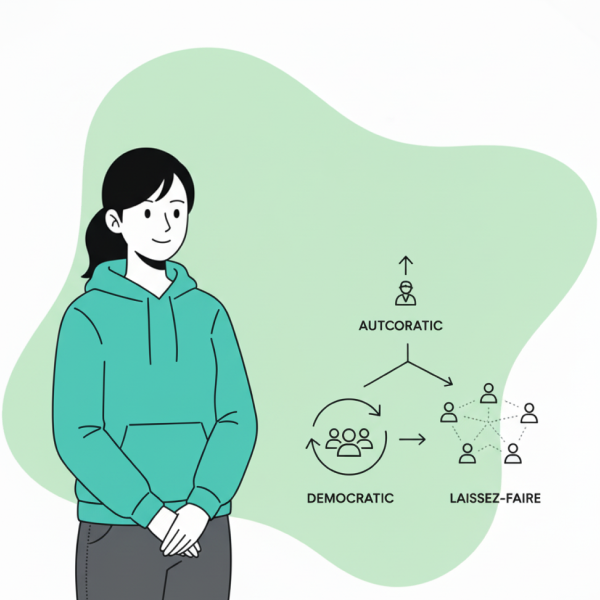
Mastering Flexibility: the Key to Effective Leadership
Every team, product, and market pressure demands a leader who can adapt, communicate, and decide with clarity. In practice, professionals explore leadership styles to map behaviors to outcomes across contexts and industries. Rather than clinging to a single pattern, effective leaders adjust tempo, tone, and decision rights to match risk, resources, and readiness. That flexibility turns ambiguity into traction, helping teams deliver when the stakes are high.
Know when to Adapt
When complexity spikes, rigid formulas falter while grounded judgment prevails. Across projects, you will encounter different leadership styles that align uniquely with risk, autonomy, and team maturity during execution. Some emphasize empowerment and vision, while others elevate precision and control, yet the masterful leader knows when to dial one up or down. By treating approach as a strategic lever, you create resilience without sacrificing speed or standards.

- 1Sharper prioritization and fewer stalled initiatives
- 2Healthier debate that converts diverse perspectives into action
- 3Greater trust thanks to consistent boundaries and fair follow-through
- 4Faster onboarding through shared language and explicit norms
Developing Leadership Skills for Measurable Impact
The value of an adaptable approach shows up directly in retention, speed, and quality. Performance rises when focused leadership skills are nurtured through deliberate practice and purposeful stretch assignments across quarters. Clear expectations, crisp prioritization, and constructive feedback loops reduce friction while elevating accountability. Over time, that discipline compounds into a culture of momentum and measured risk-taking.

Beyond the individual, the ripple effects touch culture, coordination, and psychological safety. Comparisons among management styles reveal how preferences shape culture, cadence, and conflict resolution during growth spurts. Teams model what they observe from decision-makers, mirroring calm under pressure or, alternatively, cascading reactivity. The outcome is visible in customer satisfaction, cycle time, and innovation throughput, all of which track to the everyday behaviors leaders reinforce.
Build Teams With Coaching
Developing range requires deliberate repetition, honest feedback, and real stakes. One-on-one partnerships such as leadership coaching catalyze insight by pairing reflective questions with behavioral experiments between sessions. You move faster when each cycle ends with explicit commitments, observable criteria, and scheduled reviews. The compounding effect comes from micro-upgrades layered onto real work.

Major Approaches and when Each Works Best
Choosing how to guide a group starts with context: volatility, skill dispersion, and interdependencies. Taxonomies that map the types of management styles to situational demands help teams coordinate, especially under stress. Directive moves serve crisis containment, while participative moves unlock creativity when the problem space is fuzzy. The art sits in sequencing, because teams often need both decisiveness and inclusion at different phases of the same initiative.
Scholars and practitioners converge on frameworks that unify disparate behaviors into a coherent scaffold. Many programs reference the full range leadership model as a spectrum that spans hands-off tendencies to transformational behaviors across projects. With that lens, leaders can diagnose overused habits and design counterbalancing routines that round out their repertoire. The result is a more deliberate match between context and conduct.
| Approach | Primary Strength | Common Risk | Best Use Case |
|---|---|---|---|
| Vision-led | Inspires purpose and long-horizon thinking | Can overlook near-term constraints | Pivots, transformations, new product bets |
| Data-driven | Anchors choices in evidence and learning | Analysis paralysis under time pressure | Process optimization, risk-sensitive operations |
| Directive | Rapid decisions and unambiguous roles | Lower engagement and idea flow | Incidents, outages, urgent compliance fixes |
| Collaborative | Broad buy-in and diverse solutions | Diffused accountability and slow cadence | Ambiguous problems and cross-functional work |
| Coaching-driven | Skill growth and autonomy over time | Slower early delivery while learning | Talent development and succession building |
Curiosity-rich approaches often start with questions that surface assumptions before prescribing answers. Many managers ask what is a coaching leadership style in practice, and they quickly realize it blends inquiry with guidance to strengthen ownership. Instead of fixing every issue, the leader helps the contributor articulate options, weigh trade-offs, and commit to experiments. That method builds judgment where it matters most close to the work.

Maturity models and competence maps can accelerate growth by visualizing the pattern behind outcomes. Some practitioners value the leadership circle as a framework that links inner operating system to outward results within development plans. By connecting reactive impulses to creative competencies, it helps leaders reframe triggers and update habits. Over months, that awareness shifts from episodic insight to a durable way of operating.
Self-knowledge accelerates change when it is specific, timely, and comparative. For quick reflection, interactive diagnostics like a leadership style quiz can spark perspective across scenarios. Experience cements new behaviors far better than theory alone. Immersive experiences like a leadership workshop accelerate practice through feedback and peer accountability during simulated challenges. Participants benefit from safe-to-fail experiments that mirror the volatility of live projects.

- 1Schedule debriefs after key decisions to capture lessons
- 2Rotate meeting roles to broaden facilitation capabilities
- 3Track one behavioral metric per week to reinforce focus
Targeted Development Through Leadership Assessment
What you measure shapes what you improve, yet nuance is critical to avoid gamification. Before change programs, a thorough leadership assessment clarifies baseline strengths, derailers, and perception gaps across stakeholder groups. Triangulating self-views with colleague input reduces blind spots and directs finite energy where it matters. Over time, those insights inform targeted practice rather than generic checklists.
Instrumentation should mix qualitative stories with quantitative indicators. Data-rich dashboards and validated leadership assessment tools translate behavior into observable metrics without oversimplification. Pairing sentiment analysis with delivery outcomes reveals whether new routines are both felt and effective. The objective is persistent, evidence-backed evolution that endures beyond the enthusiasm of kickoff meetings.
Frequently Asked Questions
- How do I choose an approach for a new team?
Start by mapping mission criticality, decision cadences, and capability dispersion. Conduct quick listening tours to understand how work really flows, then set a few norms and adjust based on early signals. As clarity increases, dial up participation while protecting speed on high-risk items.
- How can I evaluate my default tendencies?
Ask for real examples from colleagues about moments when your behavior helped or hindered progress. For a fair snapshot, a structured leadership style assessment combines self-ratings with manager and peer input for triangulation. Treat the output as a hypothesis to test rather than a fixed label to defend.
- What should guide my approach during a crisis?
In emergencies, reduce ambiguity first with decisive calls and clear role assignments. Communicate frequently, keep work visible, and reserve a short window for after-action review so learning converts into durable protocol. When stability returns, broaden input to rebuild trust and momentum.
- Which path fits a high-autonomy expert group?
Skilled contributors thrive when goals are explicit, constraints are known, and space for craft is protected. If you wonder about what leadership style fits your team, consider context, goals, and temperament before choosing. Offer direction on interfaces and priorities while letting experts own execution detail.
- How quickly can leaders change ingrained habits?
Meaningful change arrives through small, repeatable shifts stacked over weeks and months. Commit to one behavior at a time, practice it in multiple meetings per week, and gather feedback on what others observe. With consistency and accountability, the flywheel starts turning faster than you expect.
The Latest News About Different Leadership Styles
-
![The Complete Guide to Modern Leadership Style Assessment]()
- 21 October, 2025
-
![The Ultimate Guide to Identifying and Applying Your Leadership Approach]()
- 20 October, 2025
-
![Leadership Skills Style for Modern Teams: Capabilities, Benefits, and Assessment]()
- 19 October, 2025
Please Note
This website (leadership-style-assessment.com) is not an official representative, creator or developer of this application, or product. All the copyrighted materials belong to their respective owners. All the content on this website is used for educational and informative purposes only.



